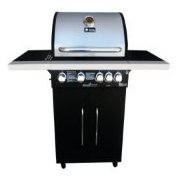dd-wrt with true tompson cable modem/router help? pse
-
Recently Browsing 0 members
- No registered users viewing this page.
-
Topics
-
-
Popular Contributors
-
-
Latest posts...
-
-
25
Community Pattaya Nightclub Plays National Anthem to Show Solidarity Amid Border Tensions
Vibrant is an understatement. Its a fantastic night club, well worth a visit. -
-
13
-
-
0
Trump Administration Putting a Stop to Abuse of First Amendment
GMU Faculty Senate targeted in DOJ letter The head of the U.S. Department of Justice’s civil rights division sent a letter Friday requesting that George Mason University’s rector provide “all written communications” regarding a resolution its faculty senate passed last week in support of President Gregory Washington. Dated July 25, the letter signed by Assistant Attorney General Harmeet K. Dhillon says that the department was informed of the resolution commending “Washington’s efforts to ensure ‘faculty and staff demographics … mirror student demographics’ at GMU,” according to her letter. George Mason is Virginia’s largest public university and its most racially and ethnically diverse, with 39,763 students enrolled in fall 2024, and 66.3% of all students are listed as nonwhite. “This statement is concerning as it indicates the GMU Faculty Senate is praising President Washington for engaging in race- or sex-motivated hiring decisions to achieve specific demographic outcomes among faculty and staff,” Dhillon writes. https://virginiabusiness.com/gmu-faculty-senate-targeted-in-doj-letter/
-
-
Popular in The Pub


.thumb.jpg.bc523c85a8d558dbc282dca7a2e602c9.jpg)









Recommended Posts
Create an account or sign in to comment
You need to be a member in order to leave a comment
Create an account
Sign up for a new account in our community. It's easy!
Register a new accountSign in
Already have an account? Sign in here.
Sign In Now